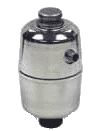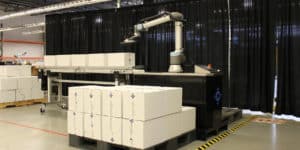Metrology Glossary: Creep
What Is Creep?
Creep is a phenomenon characterized by the gradual and time-dependent deformation of a material under the influence of a constant or sustained load. This process can manifest as a subtle decrease in tension for materials subjected to tensile stress or as a gradual reduction in clearance for materials experiencing compressive stress. Creep occurs due to the atomic and molecular rearrangements that take place within the material’s structure over time. Several key factors influence the rate and extent of creep, including the intrinsic properties of the material, the prevailing temperature conditions, and the magnitude of the applied load. Understanding and managing creep is crucial in various engineering and industrial applications where materials are subjected to prolonged stress, as it can impact the long-term performance and reliability of structures and components.
Why Is Creep Important?
Power Generation:
- Turbine Blades: Creep in gas turbines can gradually distort turbine blades, compromising efficiency. Precise material selection and design are essential for safe and efficient turbine operation.
- Nuclear Reactors: Creep is crucial in designing nuclear reactors. Components like pressure vessels and fuel rods, exposed to high temperatures, require careful management to ensure safety and prevent accidents.
Aerospace and Aviation:
- Aircraft Structures: Creep affects aircraft structures, potentially leading to fatigue failure. Advanced materials and design techniques are vital to minimize creep impact and maintain structural integrity.
- Rocket Engine Components: Creep in rocket engines, affecting components like injector nozzles, demands the use of creep-resistant materials and innovative cooling strategies for reliable operation.
Civil Infrastructure:
- Bridges and Buildings: Creep can cause long-term deflection in bridges and buildings. Incorporating an understanding of creep in design is crucial for ensuring stability and longevity.
- Pressure Vessels and Pipelines: In oil and gas, pressure vessels and pipelines face creep challenges. Meticulous material selection and design optimization are essential to prevent failures.
Materials Science and Development:
- Material Characterization: Creep tests characterize material properties under elevated temperatures, aiding in material selection, design optimization, and predicting long-term performance.
- Development of New Materials: Understanding creep mechanisms guides the development of materials resistant to deformation at high temperatures, with potential applications in aerospace, energy, and infrastructure.






